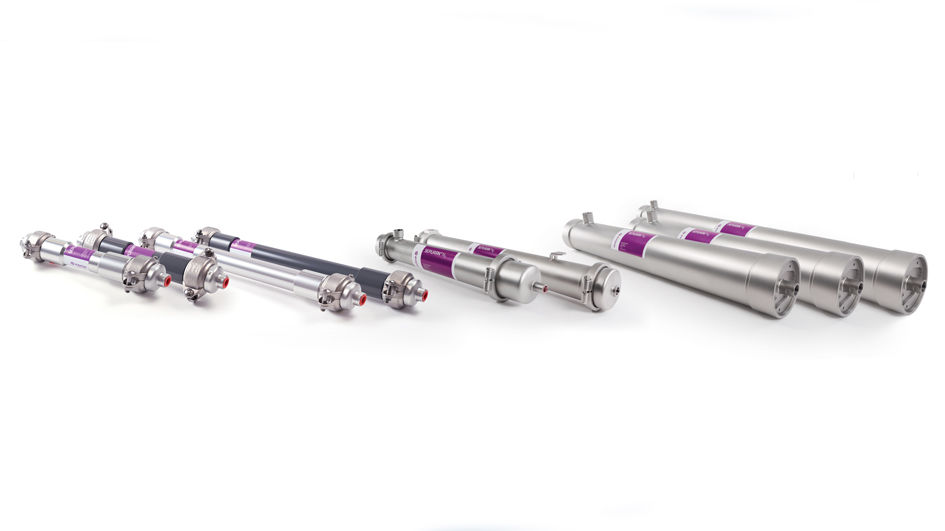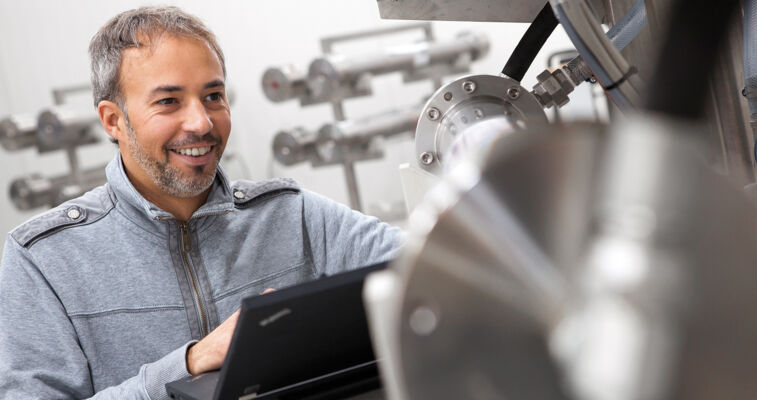
SEPURAN® N2 membranes - needs oriented nitrogen generation
The aerospace, energy, chemical, and food industries—all of these sectors require nitrogen at different levels of purity. With its newly developed hollow-fibre membrane SEPURAN® N2, Evonik is offering a needs-oriented, efficient, and energy-saving solution for obtaining the desired gas.
Nitrogen is a useful gas in many respects for various industries. The advantages are well known: It does not burn, is inert, tasteless and odorless. Depending on the application, this industrial gas exists in various forms of purity and quality. 99.999 percent purity is possible - but is it always the best choice? In fact, many companies use high quality nitrogen in processes where high purities are not needed.
PURE NITROGEN NOT ALWAYS NESSECARY

Nitrogen is often used to prevent fires or explosions: Anyone who supplies the inert gas to a room or a container can ensure in this way that the oxygen content drops to such an extent that flames cannot find food. In the chemical industry, oxidation of oxygen-sensitive products is prevented in a similar way, and in the food industry, nitrogen extends the shelf life of bottled products. And this is precisely where the crucial issue lies: not all of these processes require 99.999 percent nitrogen purity. Many companies primarily want to prevent explosions, or have other processes that require nitrogen: In nine out of ten of these processes, 95 percent purity might be enough. So using especially pure nitrogen would be a waste of money.
Cryogenic air separation, also known as the “Linde process,” is particularly good at doing this. It can extract nitrogen at a purity of over 99.99 percent. But this level of quality comes at a price: Cryogenic air separation consumes a lot of energy and is only profitable in large-scale production. For many applications, technical nitrogen with a purity of 95 to 98 percent is sufficient.
Membranes for efficient onsite nitrogen generation
In terms of efficiency and energy, membranes are unbeatable. In this case, nitrogen can be obtained directly from the air that surrounds us all. But in the process, the gas must be separated from oxygen, which makes up about 21 percent of this air. In membrane systems, compressed air is passed through long, thin hollow fiber membranes. This creates a partial pressure difference between the outside and the inside of the hollow fiber. The smaller oxygen molecules slip through the membrane, while the nitrogen molecules remain inside. The effect is that the less air is added, the purer the nitrogen in the end.
However, this is also where the limits of the process lie: To achieve a purity of 99 percent or more, correspondingly less air would have to be fed into the membrane - and correspondingly less nitrogen would be obtained in the process. In view of the high energy input involved, it is therefore necessary to check what degree of purity is actually required for the processes in question. Companies are well advised to take a very close look here: In the case of inerting, safety considerations usually dictate exactly how much nitrogen is required. And purity levels between 95 and 97 percent are often sufficient - perfect for membrane systems.
Customized membrane systems for wide range of nitrogen applications

As one of the technology leaders in high-performance polymers, Evonik has developed customized systems in recent years to separate different gases for a wide range of applications. The membranes specially developed by Evonik impress with their high selectivity. The hollow polyimide fibers are responsible for this. The gas-active layer on the surface of the fiber is less than 100 nanometers thick. The finished hollow fiber membranes have a diameter of less than half a millimeter. As a chemical company, Evonik not only has access to a sophisticated basic polymer, but can also adapt it precisely for different applications. Especially in combination with the required capacity, i.e., how much air needs to be pumped into the membrane to produce one cubic meter of gas.
|
Applications |
Description |
|
Nitrogen is extremely beneficial in the food and beverage industry as it can be used to displace oxygen and therefore prevent oxidation, which causes food and beverage spoilage. |
|
|
Evonik offers its hollow-fibre SEPURAN® N2 membranes for efficient on-site nitrogen generation in various applications within the ships and marine industry. |
|
|
Evonik is responding to the challenges of today's wastewater management with its innovative membrane technology approach for nitrogen/oxygen enriched air to boost the efficiency in wastewater treatment plants. |
SAVES SPACE, COSTS AND EFFORTS
In the end, several tens of thousands of the polyimide tubes are embedded in stainless steel modules about 1.30 meters long. A space-saving system, and not just because of its size: Depending on the location, the stainless steel tubes can be installed horizontally, vertically or even at an angle. Their modular design also makes them flexible. Due to their high capacity, SEPURAN® N2 also requires fewer membrane modules than alternative membrane systems. In addition, they are energy-efficient: Since less air has to be pumped, the upstream compressor can also be smaller. This saves both energy and investment costs. Especially compared to cryogenic systems, where the nitrogen is delivered. Operating costs and maintenance requirements are also low with SEPURAN® N2-and guarantee additional flexibility. After all, the nitrogen is produced on demand. As long as no nitrogen has to be produced, there are no costs.
As a producer of the polyimide plastic and the membrane technology, Evonik covers the entire value chain of membrane modules. As a result, the company can customize details for specific applications as needed, and also connect to established plant engineers who can take care of on-site installation.
Due to its flexibility, the SEPURAN® N2 membrane technology for onsite nitrogen generation is interesting for a wide range of possible applications. For example, even for companies that already work with cryogenic air separators but want to cover demand peaks at certain times. Or for situations where a system that is as mobile as possible is required - because a specific plant needs to be purged with nitrogen on site. The situation is similar in pipeline construction. The membranes can also be installed and transported in vehicles. Overall, the possibilities are extremely diverse - although the system itself is so compact and flexible, this makes it an asset for far more than just small applications. And it can be easily and quickly connected to existing control systems. It also can be used from long distances with automated steering systems, as in the case of the marine industry, e.g.. On top of that, it is durable: The membrane does not need to be replaced and can be used for several years without any problems.
In the meantime, interested customers also have the option of using an online calculator to see for themselves how many membranes of what size they might need. This can be set variably according to parameters: Interested parties can therefore specify that they need 120 cubic meters of nitrogen, or a purity level of over 97 percent - or both at the same time.




